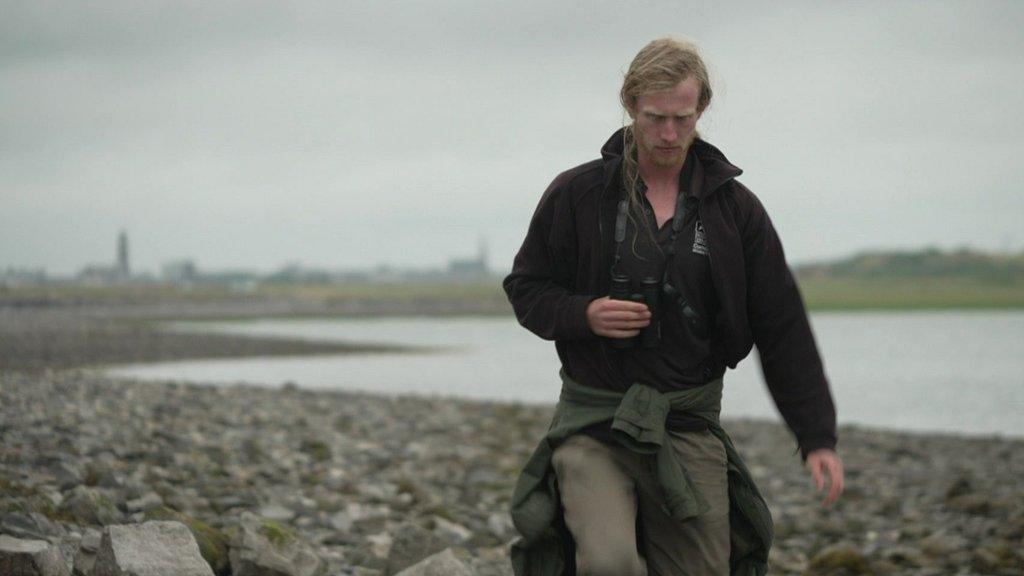Cumbria seabirds' breeding success after tough few seasons
- Published
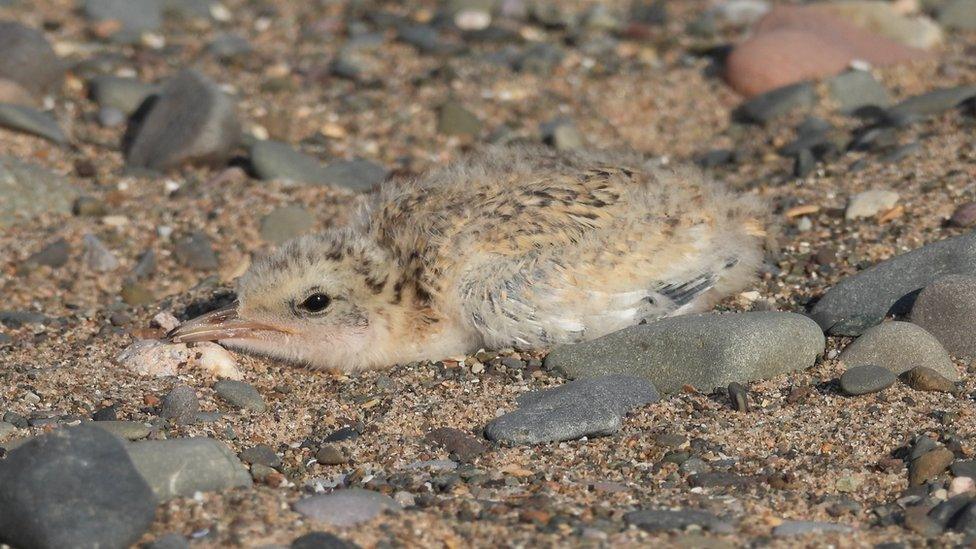
Little tern are the UK's second rarest breeding seabird after the roseate tern
Seabirds have had a "very successful" breeding season on the Cumbrian coast following a challenging few years.
Eight Arctic terns fledged following the failure of their 2022 season and their complete abandonment of the Foulney Island Reserve in 2020.
Little tern numbers doubled at another site with 10 pairs producing 20 young.
But Cumbria Wildlife Trust said the breeding season was marred by disturbances by dogs, walkers, kayakers, microlights and drones.
Despite dogs not being allowed on nature reserves during breeding season, external, dogs and their walkers accounted for half of disturbances this year, the trust said.
The breeding season runs from 1 April to 15 August.
The trust said the number of chicks fledging was up at both South Walney Nature Reserve and Foulney Island Nature Reserve near Barrow.
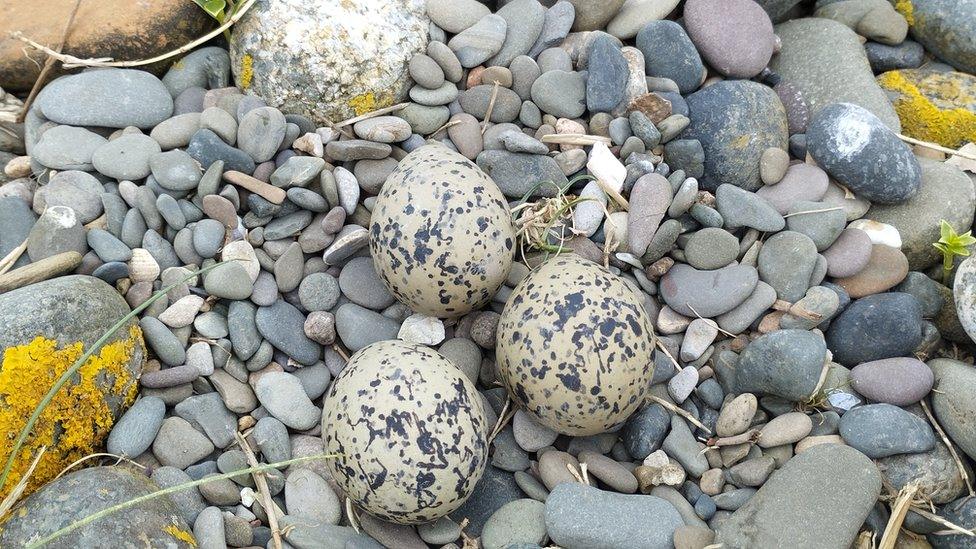
Seabird eggs are often impossible to discern amid the pebbles
Seasonal wardens recorded kayakers paddling into no-access areas, microlights and drones, all of which they said could cause birds to panic and leave their nests, sometimes abandoning them for good.
Foulney Island seasonal warden, Bekka Watts, said signs saying "no dogs" had been removed from the island and the causeway, and one of them was dumped in the sea.
She said one dog mauled a nesting eider to death in May.

Seasonal wardens spend the breeding season living in a caravan on the island
The 2023 breeding season was described as a "great result" by the trust with six little terns fledging at Foulney Island and 10 fledging at South Walney.
Ringed plovers and oystercatchers at South Walney were slightly less successful and produced 20 and 36 nests respectively.
The trust also recorded 755 pairs of herring gull and 870 pairs of lesser black-backed gull, classified as red and amber under the Birds of Conservation Concern listing.

Nest cages, made from stock fencing and chicken wire, were trialled and gave ringed plovers extra protection against predators

Follow BBC North East & Cumbria on X (formerly Twitter), external, Facebook, external and Instagram, external. Send your story ideas to northeastandcumbria@bbc.co.uk, external.
Related topics
- Published12 October 2023
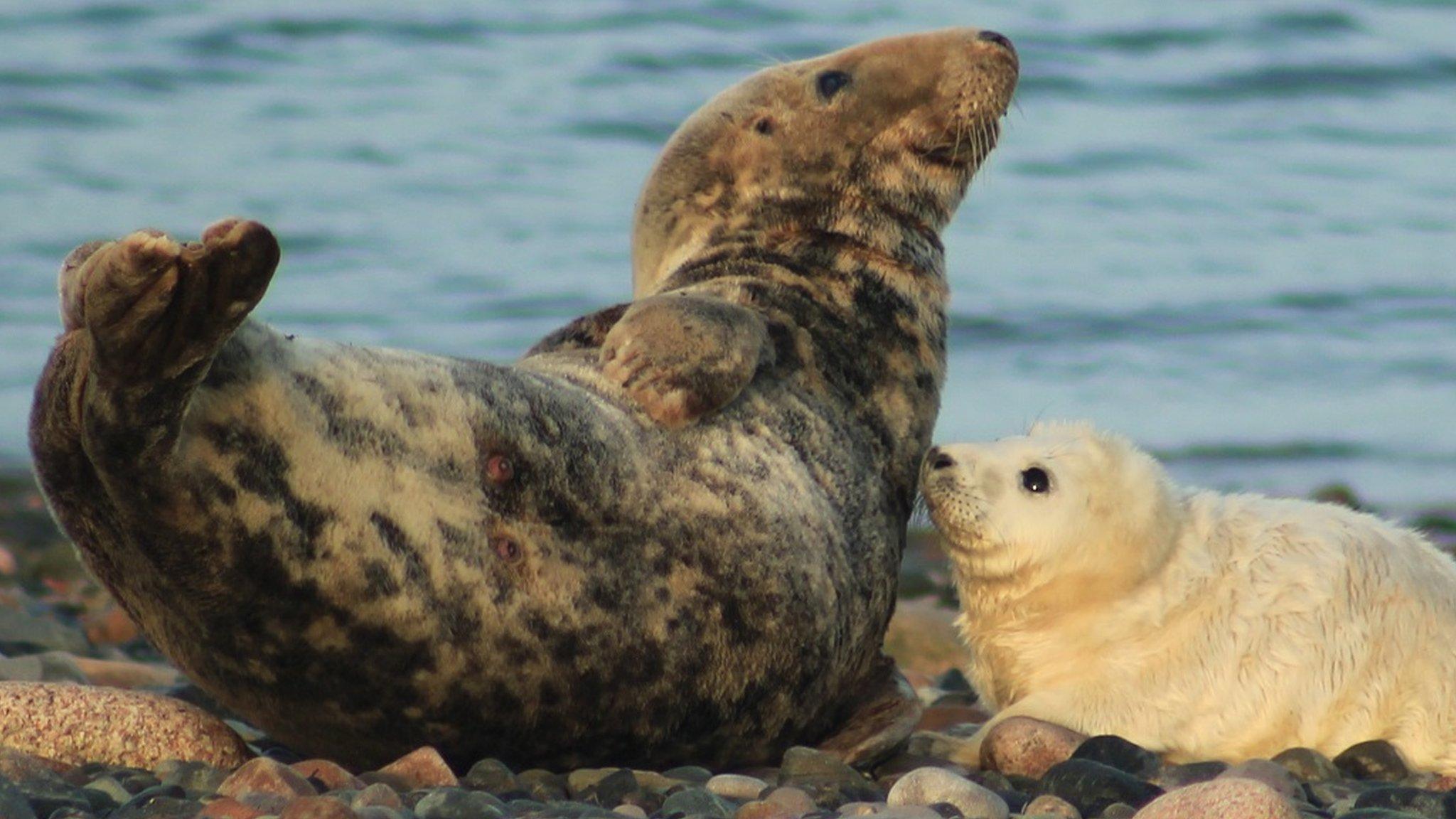
- Published24 August 2023
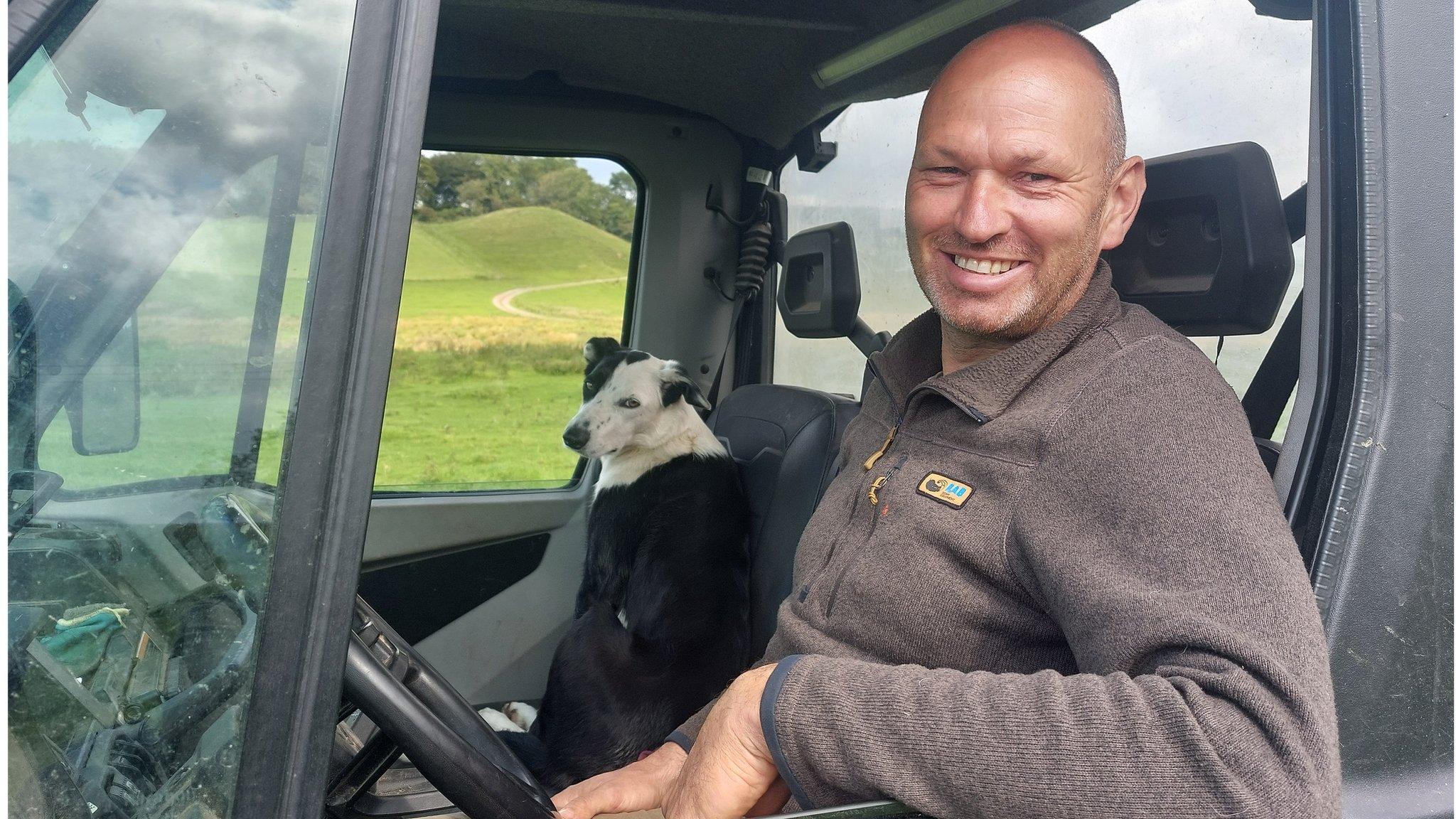
- Published11 August 2021
